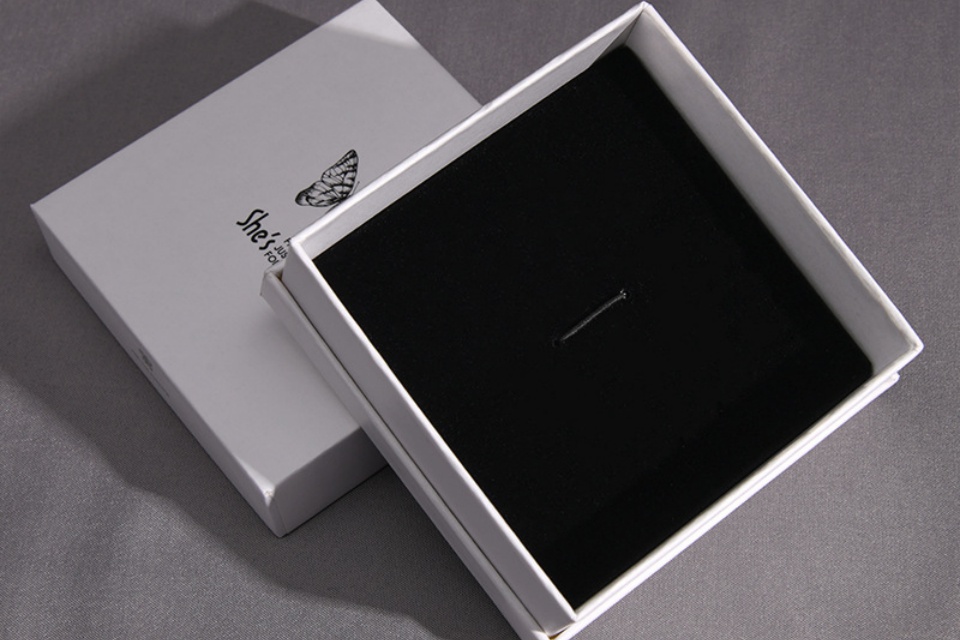Our News
Mastering The Art Of The Unboxing Experience
Mastering The Art Of The Unboxing Experience
Summary
The unboxing experience refers to the process and emotional engagement consumers encounter when opening a product's packaging, which has become a significant element in modern retail and e-commerce. Initially a simple functional task, unboxing has evolved into a popular phenomenon fueled by social media and digital content, with unboxing videos gaining immense popularity on platforms like YouTube and TikTok. This trend has transformed the act of unboxing into a marketing strategy that enhances customer engagement and brand perception, influencing purchasing decisions and fostering brand loyalty.
The rise of unboxing as a marketing tool highlights its impact on consumer behavior, as brands increasingly recognize its potential to create memorable experiences. Well-executed unboxing moments can elevate perceived product value and encourage consumers to share their experiences online, contributing to a brand's visibility and reputation. Companies such as Dollar Shave Club and Ragnarok have successfully leveraged innovative unboxing strategies to boost customer satisfaction and loyalty, demonstrating the importance of thoughtful packaging design and personalization.
However, the unboxing experience is not without its challenges and controversies. As environmental concerns grow, brands face scrutiny over excessive packaging waste and sustainability issues, with consumers demanding more eco-friendly solutions. Additionally, the rise of social media has set high expectations for unboxing experiences, leading to potential disappointment when reality falls short of consumers' aspirations. Balancing these expectations while managing cost implications poses a challenge for many companies striving to enhance the unboxing experience.
Looking to the future, the unboxing experience is expected to continue evolving, incorporating advancements in technology and sustainable practices. Emerging trends, such as augmented reality and personalized packaging, will shape how consumers engage with products and brands, making it essential for companies to remain responsive to changing consumer preferences and expectations.
History of Unboxing
The concept of unboxing has evolved significantly over the years, becoming a vital aspect of the modern retail and e-commerce landscape. Initially, unboxing was simply the act of removing a product from its packaging, primarily seen as a functional necessity for consumers. However, with the rise of digital platforms and social media, unboxing began to take on new meanings and implications for brands and consumers alike.
The Rise of Unboxing as a Marketing Tool
In the early 2010s, unboxing videos started to gain traction on platforms like YouTube. Creators began documenting their experiences of opening new products, sharing insights on packaging, and revealing the product itself to their audiences. This trend tapped into viewers' emotions, creating a sense of excitement and anticipation, which led to the phenomenon of unboxing videos becoming a popular content format.
The integration of unboxing into marketing strategies became apparent as brands recognized its potential to enhance customer engagement. Research indicated that well-crafted unboxing experiences could increase perceived product value and encourage positive brand associations. Consequently, companies began to focus more on the unboxing experience as a means to differentiate themselves in a competitive marketplace.
Unboxing Videos and Their Impact
Unboxing videos became a cornerstone of influencer marketing, with creators using them to showcase new products and provide their audiences with authentic experiences. These videos not only generated excitement but also facilitated social proof, driving consumer trust and purchase decisions. In fact, statistics show that unboxing videos have been viewed billions of times, underscoring their popularity and impact on consumer behavior.
Platforms like TikTok have further fueled this trend, with unboxing videos becoming some of the most engaging content. They allow brands to reach larger audiences and ignite interest through shareable and captivating visuals, demonstrating the powerful connection between unboxing and digital marketing in contemporary commerce.
The Future of Unboxing
As e-commerce continues to grow, the unboxing experience is likely to evolve further. Brands are exploring innovative ways to enhance this aspect, focusing on sustainability and reducing waste in packaging while still delivering memorable experiences. The ongoing evolution of technology and consumer preferences will shape the future of unboxing, making it an essential topic for marketers and businesses aiming to foster brand loyalty and customer satisfaction.
Elements of the Unboxing Experience
The unboxing experience encompasses several key elements that together create a memorable interaction for consumers when they receive a product. Understanding and optimizing these elements can significantly enhance customer satisfaction and foster brand loyalty.
Packaging Design
Materials Used
The choice of materials plays a crucial role in the unboxing experience. Brands are encouraged to use high-quality, sustainable materials that align with their mission and values. Lightweight, biodegradable options like air pillows can reduce environmental impact while still offering adequate protection during shipping. Additionally, the tactile qualities of packaging can create a richer sensory experience, making the unboxing process more engaging.
Functionality vs. Aesthetics
An effective packaging design strikes a balance between functionality and aesthetics. It should be visually appealing while also being practical, ensuring that the product is well-protected and easy to access. Thoughtful design elements, such as easy-to-open features and clear product visibility, enhance usability and improve the overall unboxing experience.
The Psychological Impact
At the heart of the unboxing experience is the emotional engagement it evokes. This process can spark feelings of joy, excitement, and anticipation, influencing the consumer's overall perception of the product and the brand. Effective unboxing experiences not only increase perceived product value but also promote positive associations with the brand, encouraging customers to share their experiences on social media.
Personalization
Personalization is another vital aspect of the unboxing experience. Custom elements, such as including the customer's name or personalized messages, help create a connection between the brand and the consumer. Such personalized touches can make customers feel valued, fostering loyalty and encouraging repeat business.
User-Friendly Design
Packaging must prioritize ease of use. Customers generally prefer designs that are straightforward and easy to open. Research indicates that 70% of shoppers appreciate packaging that simplifies their experience. Complicated packaging can lead to frustration and negatively impact the overall experience, making user-friendly design a critical consideration in packaging strategy.
Engaging and Shareable Elements
Lastly, incorporating interactive features like QR codes or augmented reality elements can elevate the unboxing experience by providing additional information or entertainment. These engaging elements not only create memorable experiences but also encourage customers to share their unboxing moments online, amplifying brand visibility and reach.
By carefully considering these elements—psychological impact, packaging design, personalization, user-friendliness, and engaging features—brands can craft an unboxing experience that not only delights customers but also enhances their loyalty and connection to the brand.
The Role of Technology
The integration of technology into the unboxing experience has significantly transformed how consumers interact with products and brands. As digital integration becomes increasingly expected, companies are finding innovative ways to enhance packaging through technological advancements. One notable innovation is the use of Near Field Communication (NFC) tags embedded in packaging, which allow users to tap their smartphones on the package to access additional content, such as product documents or surprise rewards. This type of seamless interaction not only provides practical information but also adds an element of excitement to the unboxing process.
Moreover, smart packaging designs that incorporate features like LED lights or sound modules have emerged as popular trends. For example, packages that light up or play custom tunes when opened create a memorable and engaging experience for the recipient, thereby elevating the overall unboxing moment. Such tech-enabled features not only enhance user satisfaction but also serve as compelling marketing tools that encourage sharing on social media.
Augmented Reality (AR) is another technology that is beginning to reshape the unboxing landscape. By creating interactive elements, AR allows customers to engage with products in new and immersive ways. For instance, brands can use AR to provide tutorials, link to additional content, or offer exclusive promotions directly through their packaging. This integration not only makes the unboxing experience more engaging but also helps bridge the gap between physical and digital interactions.
As consumers become more digitally savvy, the demand for these interactive technologies is expected to grow. Companies that adopt such innovations can significantly enhance the customer experience, standing out in a competitive marketplace where effective packaging and labeling can substantially impact brand perception and sales outcomes.
Case Studies
Success Stories in Unboxing
Case studies and success stories in unboxing highlight how this innovative marketing strategy can elevate an ordinary product into an extraordinary experience. These real-life examples demonstrate the effectiveness of unboxing in enticing and engaging customers. One notable case is the gaming company Ragnarok, which saw a significant increase in customer satisfaction and brand loyalty after revamping its unboxing process. By adding personalized touches, such as surprise gifts, they created a memorable and unique customer experience that resonated with their audience.
To generate buzz around their product, Ragnarok strategically hand-delivered the first batch of "Mysterious Boxes" to influential gamers on platforms like YouTube and Facebook. The live unboxing events showcased the luxurious packaging and unique personal touches, resulting in widespread appreciation from the public.
Another successful example is Loot Crate, which encourages customers to share their unboxing experiences on social media. This approach fosters a sense of community among fans, enhancing brand engagement and loyalty. These case studies underscore the importance of creativity, attention to detail, and a deep understanding of the target audience when crafting an exceptional unboxing experience.
Measuring Success
In the marketing landscape, measuring the success of campaigns is crucial for assessing effectiveness, and the same principle applies to unboxing campaigns. It is essential to delve deeper than mere views or likes on unboxing videos. Key metrics to track include engagement rates, conversion rates, and customer feedback. Monitoring these metrics provides valuable insights into how an unboxing campaign resonates with audiences and drives desired actions.
To illustrate this, Dollar Shave Club's success story highlights the importance of data-driven approaches. The company utilized feedback from focus groups and A/B testing to refine its minimalist packaging, focusing on elements like ease of opening and sustainable materials. These adjustments led to improved customer satisfaction and brand loyalty, exemplifying how effective measurement and iteration can enhance the unboxing experience.
Psychological Aspects
The unboxing experience is deeply intertwined with psychological principles that influence consumer emotions and behaviors. Understanding these aspects is crucial for brands aiming to create memorable interactions with their products.
Emotional Engagement
Emotions play a pivotal role in shaping consumer behavior throughout the unboxing process. Anticipation builds as customers await their delivery, leading to excitement when they finally receive their order. This emotional journey can significantly enhance customer satisfaction and brand loyalty, as the tactile sensations associated with unboxing engage multiple senses, including sight and touch. The ritual of peeling away layers of packaging not only creates a moment of sensory delight but also elicits a dopamine rush, reinforcing feelings of pleasure and reward.
The Importance of First and Last Impressions
First impressions matter, but last impressions during the unboxing can be equally significant. The quality of the unboxing experience can lead to either satisfaction or disappointment, ultimately influencing the consumer's perception of the brand. A well-executed unboxing experience reflects a brand's commitment to quality and can transform a one-time buyer into a loyal customer, as it fosters an emotional connection that goes beyond the product itself.
The Role of Packaging Design
Creative packaging design serves as a critical factor in capturing consumer attention and conveying brand value. The initial seconds spent engaging with the packaging are often decisive in the decision-making process. Innovative and visually appealing designs not only stand out on store shelves but also enhance the anticipation and curiosity that initiate the unboxing experience. This careful attention to packaging can lead to a deeper emotional connection between the consumer and the brand, effectively influencing purchasing behaviors and fostering brand loyalty.
Cultural Influences and Social Dynamics
Cultural values and social influences also shape the unboxing experience. Factors such as the desire for status, acceptance, and community can drive emotional responses during the unboxing process. Marketers often leverage these emotional motivators to create a sense of urgency and exclusivity, tapping into the psychological triggers that lead to increased sales and consumer engagement.
Challenges and Criticisms
The unboxing experience, while generally celebrated for enhancing consumer engagement and brand loyalty, faces several challenges and criticisms that brands must navigate.
Environmental Concerns
One of the primary criticisms of packaging, including unboxing materials, revolves around environmental sustainability. As consumers become increasingly conscious of their ecological footprint, the use of non-recyclable and excessive packaging materials has drawn scrutiny. Research indicates that around 40% of plastic waste originates from packaging, leading to calls for more sustainable practices within the industry. Brands that fail to adopt eco-friendly materials may risk alienating environmentally conscious consumers, potentially damaging their reputation.
Consumer Expectations vs. Reality
Another challenge lies in managing consumer expectations. The rise of social media has elevated the unboxing experience to a highly visual and shareable event, often setting unrealistic standards for brands. Customers may expect elaborate packaging and presentation, and if their experience does not meet these heightened expectations, it can lead to disappointment and negative feedback. This disparity between consumer expectations and the actual unboxing experience can affect brand perception and customer satisfaction.
Cost Implications
Implementing innovative packaging solutions that enhance the unboxing experience can also be cost-prohibitive for some companies. The shift towards sustainable materials and custom designs often involves higher production costs, which may not be feasible for smaller brands. Balancing the need for an impressive unboxing experience with budget constraints presents a significant challenge, particularly for businesses trying to establish themselves in competitive markets.
Practical Limitations
While the aesthetics of packaging are important, practical considerations cannot be overlooked. Excessive focus on the visual appeal of the unboxing experience may compromise functionality and product safety. Packaging that is overly complex or extravagant can lead to issues such as product damage during transit, ultimately detracting from the overall customer experience.
Future of Unboxing
As the eCommerce landscape continues to evolve, the unboxing experience is anticipated to undergo significant transformations driven by changing consumer preferences and technological advancements. The future of unboxing is likely to be marked by an emphasis on innovation, sustainability, and enhanced consumer engagement.
Technological Integration
One of the most exciting prospects for the unboxing experience is the integration of digital elements into packaging. Emerging technologies such as augmented reality (AR) and artificial intelligence (AI) are expected to revolutionize how consumers interact with packages. For example, packaging may soon feature embedded screens that provide interactive content, such as product demonstrations or personalized messages, making the unboxing experience not just a physical act but a multimedia event that can further engage customers.
Sustainability Trends
Sustainability remains a crucial factor in consumer decision-making. The sustainable packaging market is growing, with a compound annual growth rate (CAGR) of 7.55% projected over the coming years. Companies are increasingly being challenged to adopt eco-friendly materials and practices, not only to meet consumer demand but also to enhance their brand image. As consumers prioritize sustainable practices, brands that incorporate environmentally responsible packaging solutions will likely see an increase in loyalty and trust among their customer base.
Customization and Personalization
The demand for personalized experiences is driving brands to create unboxing moments tailored to individual customers. This may involve customized packaging designs or unique inserts, such as handwritten notes or exclusive samples, which can foster a stronger emotional connection between the brand and the consumer. Such thoughtful touches can significantly enhance the perceived value of the product and encourage customers to share their experiences on social media, thereby amplifying brand visibility.
Anticipated Consumer Expectations
Looking ahead, consumer expectations regarding unboxing experiences will likely continue to diversify and grow in complexity. Brands will need to remain attuned to shifting preferences and innovative trends to stay relevant. Engaging with customers through feedback and focus groups will be crucial for brands to refine their packaging strategies and ensure that they are meeting market demands effectively.
Categories
Latest News
Contact Us
Contact: Aaron Lee
Phone: +8613570866244
Tel: +8675529490260
Add: Li Songlang 2nd Industrial Zone,No.18,FengTang Rd,Guangming New District


